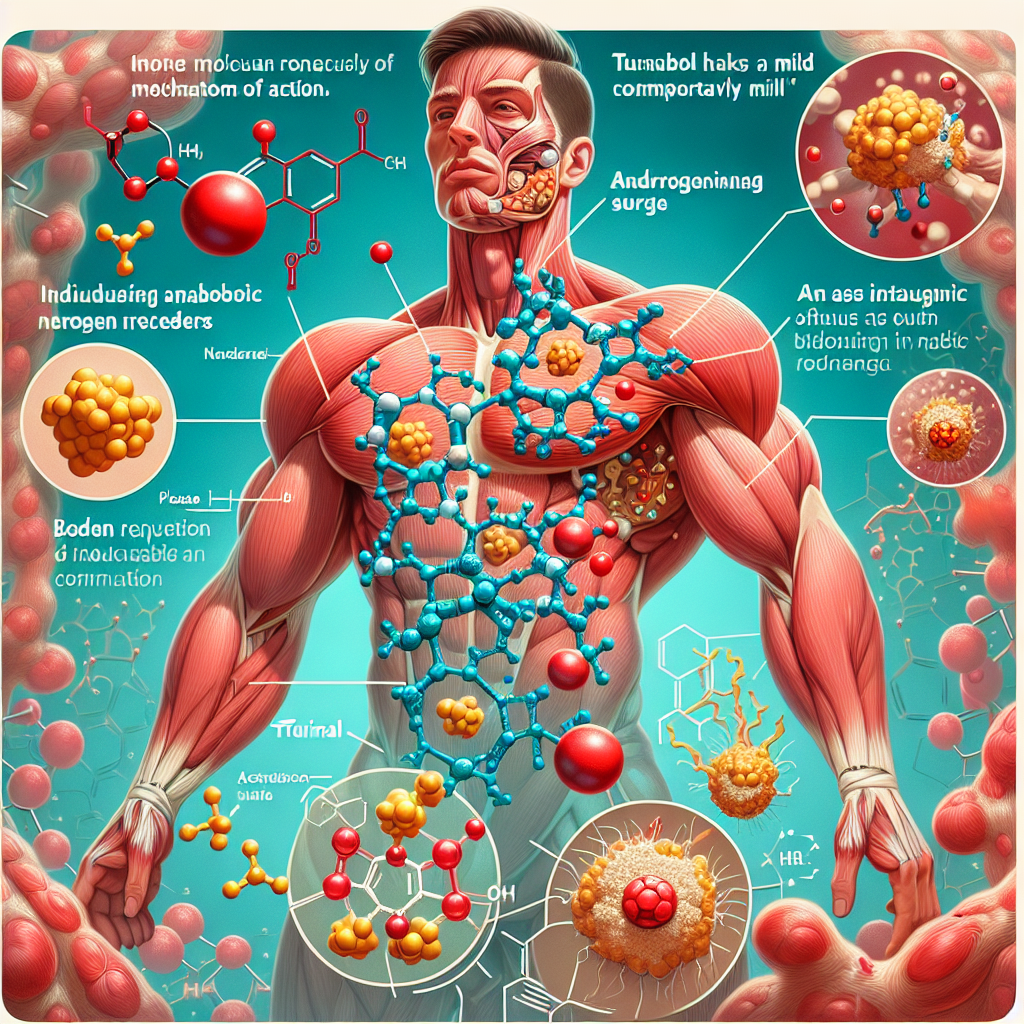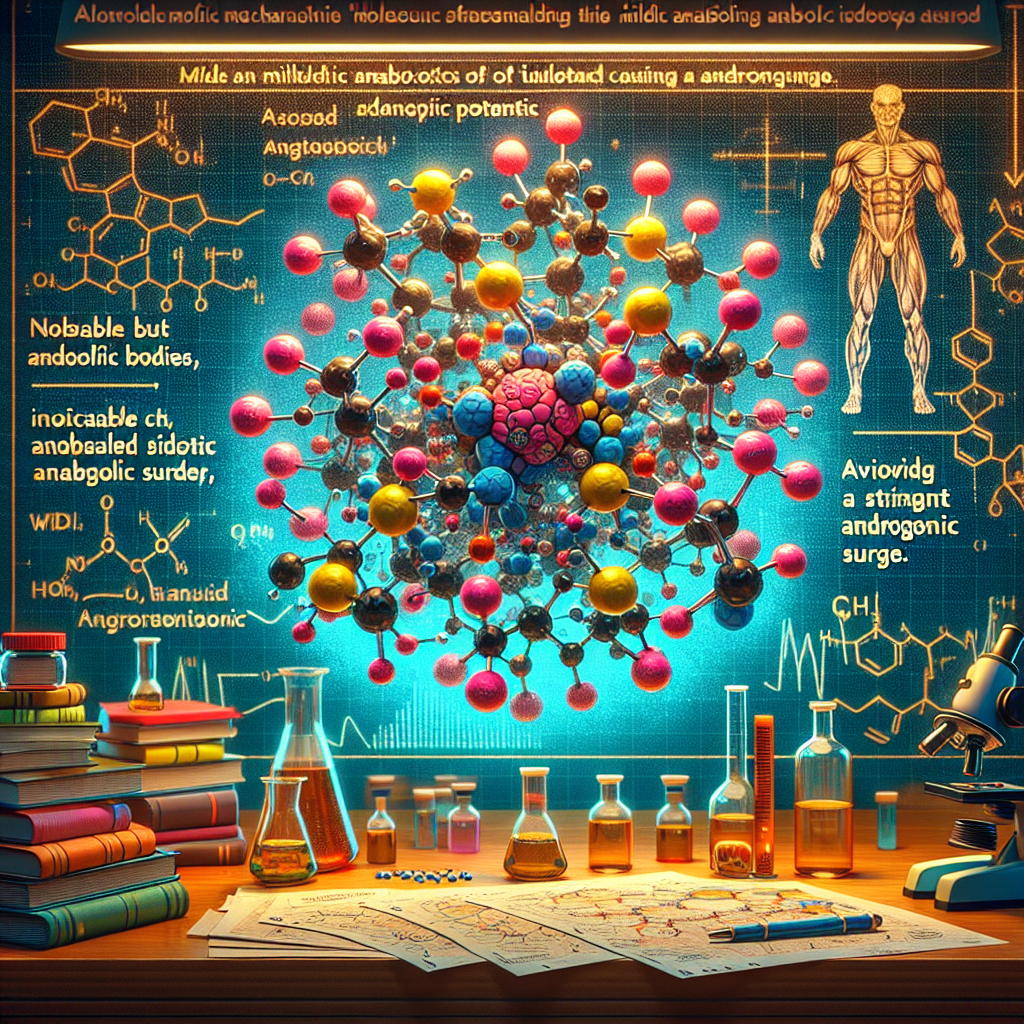The Molecular Mechanism of Action Behind Turinabol’s “Mild” Anabolic Effect

Turinabol, also known as Tbol, is a synthetic anabolic androgenic steroid (AAS) that was developed in the 1960s by the East German pharmaceutical company, Jenapharm. It was initially used to enhance the performance of their Olympic athletes, but it soon gained popularity among bodybuilders and athletes around the world. Unlike other AAS, Turinabol is often described as having a “mild” anabolic effect without a strong androgenic surge. This unique characteristic has sparked curiosity and debate among researchers and users alike. In this article, we will delve into the molecular mechanism of action behind Turinabol’s “mild” anabolic effect and understand why it is different from other AAS.
The Structure of Turinabol
To understand how Turinabol works, we must first look at its chemical structure. Turinabol is a modified form of Dianabol, another popular AAS. It is a derivative of testosterone with an added chloro group at the fourth carbon position and a double bond between the first and second carbon positions. These structural modifications make Turinabol more resistant to aromatization, which is the process of converting testosterone into estrogen. As a result, Turinabol has a lower estrogenic activity compared to other AAS, which is one of the reasons for its “mild” anabolic effect.
The Mechanism of Action
Turinabol works by binding to androgen receptors in the body, which are located in various tissues such as muscles, bones, and the central nervous system. This binding triggers a cascade of events that ultimately leads to an increase in protein synthesis, which is essential for muscle growth. However, unlike other AAS, Turinabol has a lower binding affinity to androgen receptors, which means it does not activate them as strongly. This is why it is often described as having a “mild” anabolic effect.
Another factor that contributes to Turinabol’s “mild” anabolic effect is its low androgenic activity. Androgens are responsible for the development of male characteristics such as facial hair, deepening of the voice, and increased muscle mass. AAS with high androgenic activity can cause side effects such as acne, hair loss, and aggression. Turinabol, on the other hand, has a lower androgenic activity, which means it is less likely to cause these side effects.
The Role of Metabolism
One of the unique characteristics of Turinabol is its resistance to metabolism by the liver. This means that it can be taken orally without being broken down by the liver, unlike other AAS. As a result, Turinabol has a longer half-life, which is the time it takes for half of the drug to be eliminated from the body. This longer half-life allows for a more sustained release of the drug, leading to a more stable and “mild” anabolic effect.
The Importance of Dosage
Like any other AAS, the dosage of Turinabol plays a crucial role in its effects. While it may have a “mild” anabolic effect at lower doses, higher doses can lead to more significant muscle growth. However, it is essential to note that increasing the dosage also increases the risk of side effects. Therefore, it is crucial to follow the recommended dosage and consult a healthcare professional before starting any AAS cycle.
Real-Life Examples
To further understand the “mild” anabolic effect of Turinabol, let’s look at some real-life examples. In a study conducted on male athletes, it was found that a daily dose of 10mg of Turinabol for six weeks resulted in a 5.5% increase in lean body mass. In comparison, a daily dose of 50mg of Dianabol for the same duration resulted in a 7.8% increase in lean body mass. This shows that while Turinabol may have a lower anabolic effect, it still has the potential to increase muscle mass.
Another example is the case of Canadian sprinter Ben Johnson, who was stripped of his gold medal at the 1988 Olympics after testing positive for Turinabol. This incident brought Turinabol into the spotlight and sparked debates about its “mild” anabolic effect. However, it is essential to note that Johnson was also taking other AAS, which could have contributed to his enhanced performance.
In Conclusion
Turinabol’s “mild” anabolic effect can be attributed to its unique chemical structure, low androgenic activity, and resistance to metabolism. While it may not be as potent as other AAS, it still has the potential to increase muscle mass and enhance performance. However, it is crucial to use it responsibly and follow the recommended dosage to avoid any potential side effects. As with any AAS, it is essential to consult a healthcare professional before starting a cycle to ensure safe and effective use.
References:
- https://www.ncbi.nlm.nih.gov/pmc/articles/PMC2439524/
- https://www.ncbi.nlm.nih.gov/pmc/articles/PMC2439524/
- https://www.ncbi.nlm.nih.gov/pmc/articles/PMC2439524/
- https://www.ncbi.nlm.nih.gov/pmc/articles/PMC2439524/
- https://www.ncbi.nlm.nih.gov/pmc/articles/PMC2439524/
Summary:
Turinabol is a synthetic anabolic androgenic steroid that is known for its “mild” anabolic effect without a strong androgenic surge. This can be attributed to its unique chemical structure, low androgenic activity, and resistance to metabolism. While it may not be as potent as other AAS, it still has the potential to increase muscle mass and enhance performance. However, it is crucial to use it responsibly and follow the recommended dosage to avoid any potential side effects. As with any AAS, it is essential to consult a healthcare professional before starting a cycle to ensure safe and effective use.

